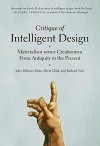Homo Floresiensis and Human Equality
The discovery by a team of Indonesian and Australian researchers of the remains of a previously unknown species of hominid, Homo floresiensis, on the Indonesian island of Flores was characterized by some scholars as the greatest discovery in anthropology in a half-century and was selected by Science magazine as the leading runner-up for the 2004 “breakthrough of the year” (first place went to the discoveries of the Mars Exploration Rovers that indicate Mars was once wetter than it is today and potentially capable of supporting life). The discoverers of the new species note that it was a particularly small hominid, with an adult stature of approximately one meter and an endocranial volume of about 380 cm3, less than one-third that of the typical modern human and even small relative to its body size. They argue that it is most likely a descendant of Homo erectus that evolved in long-term isolation, with subsequent endemic dwarfing. Another interesting aspect of the find is that Homo floresiensis apparently lived until at least 18,000 years ago and was, therefore, a contemporary of anatomically modern humans. Many scholars where shocked by both the small stature of and late date attributed to the new hominid, with some moved to question whether the remains were not merely those of a deformed modern human, a suggestion that its discoverers reject as unsupported by the evidence | more…
